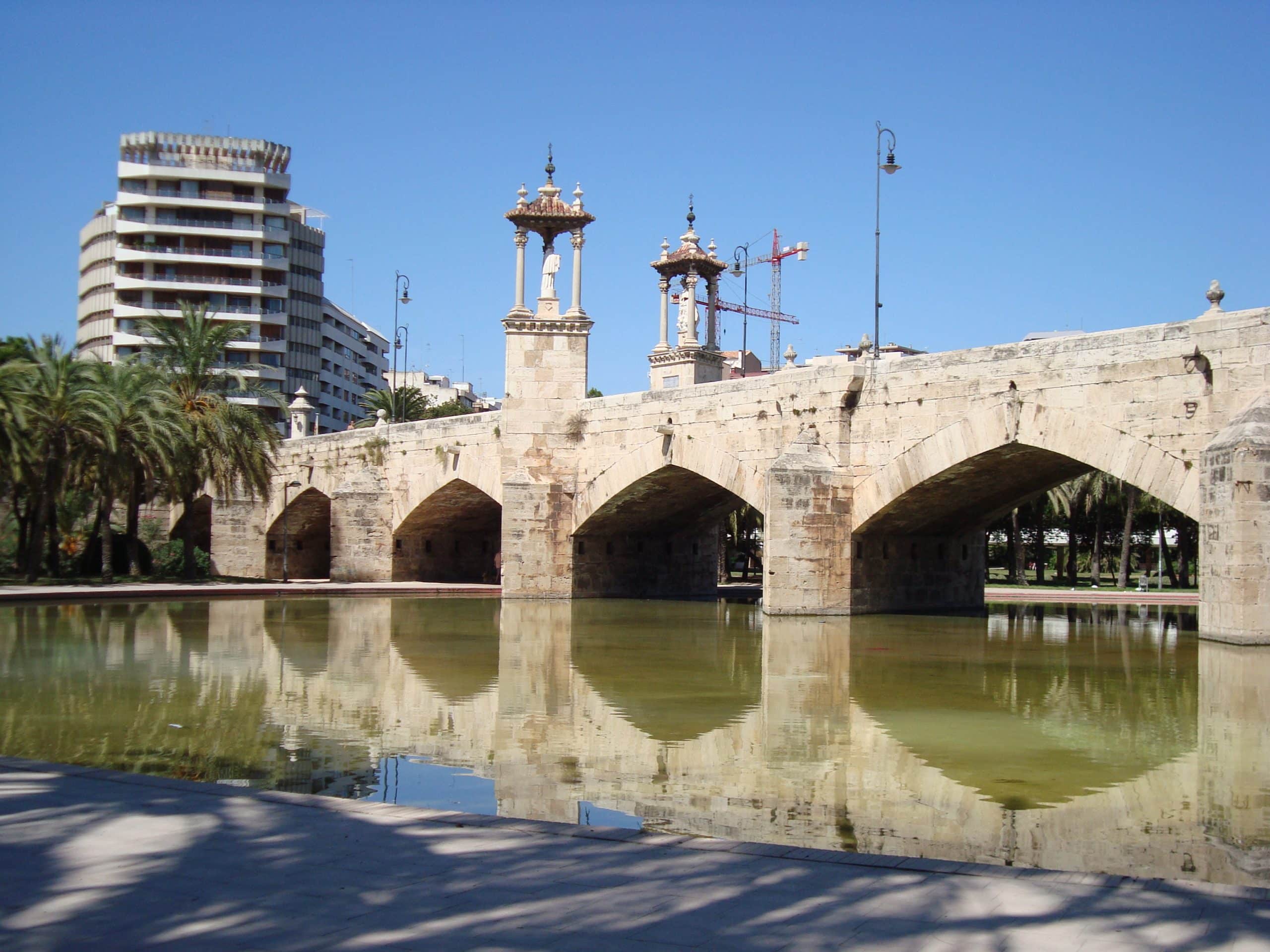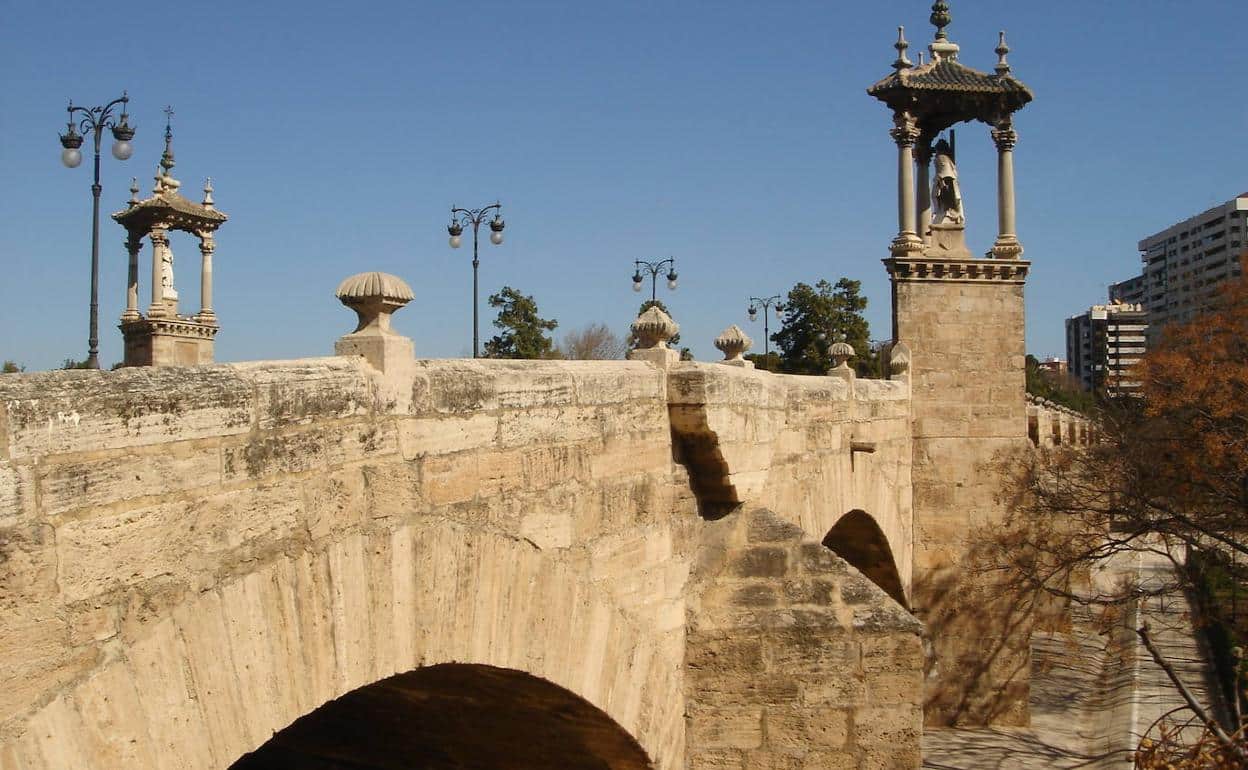Valencia is a city that is known for its stunning architecture, rich history, and vibrant culture. While many tourists flock to the well-known attractions such as the City of Arts and Sciences or the Central Market, there are a few hidden gems that are worth exploring. One such gem is the Puente del Real, a bridge that spans across the Turia River and connects the citys historic center to the university district. The bridges architecture is stunning and its history is rich, making it a must-visit destination for anyone interested in Valencias past and present. In this article, we will delve deeper into the Puente del Reals fascinating history and explore its unique architecture. Join us as we discover one of Valencias hidden gems.
Discover the Untold Riches of Valencia: A Journey Through Its Hidden Gems
Valencia, a city located in the east coast of Spain, is renowned for its stunning beaches, delicious paella, and futuristic architecture. However, this city has much more to offer than meets the eye. In this article, we will take you on a journey through the hidden gems of Valencia, where you can discover untold riches.
The Central Market
The Central Market, located in the heart of Valencia, is a food lovers paradise. This market dates back to 1914 and is one of the largest markets in Europe. Here, you can find a vast array of fresh produce, including seafood, fruits, vegetables, and meats. The market is also home to several stalls selling local delicacies, such as horchata, a refreshing drink made from tiger nuts.
The Turia Gardens
The Turia Gardens is a 9-kilometer-long park that was created in the former riverbed of the Turia River. This park is a peaceful retreat from the hustle and bustle of the city and is perfect for a leisurely stroll or a bike ride. The park is also home to several cultural landmarks, such as the City of Arts and Sciences and the Gulliver Park.
The Silk Exchange
The Silk Exchange, also known as La Lonja de la Seda, is a UNESCO World Heritage Site and a must-visit attraction in Valencia. This gothic-style building was built in the 15th century and was once the center of Valencias silk trade. The interior of the building is adorned with intricate carvings and frescoes, showcasing the citys rich history.
The Albufera Natural Park
The Albufera Natural Park, located just a few kilometers south of Valencia, is a hidden gem that is often overlooked by tourists. This park is home to a diverse range of flora and fauna, including several species of birds. The park is also home to the Albufera Lake, which is the largest lake in Spain and a popular spot for boating and fishing.
The Cabanyal-Canyamelar Neighborhood
The Cabanyal-Canyamelar neighborhood, located in the eastern part of Valencia, is a colorful and vibrant area that is steeped in history. This neighborhood was once a fishing village and is now home to several art galleries, boutique shops, and restaurants. The colorful houses and narrow streets make this neighborhood a photographers paradise.
The Horchatería de Santa Catalina
The Horchatería de Santa Catalina, located in the historic center of Valencia, is a traditional horchata shop that has been serving locals and tourists since 1836. This shop is famous for its homemade horchata, which is made from tiger nuts and is a refreshing drink that is perfect for a hot summer day.
Valencia is a city that is full of surprises, and these hidden gems are just a few examples of the untold riches that this city has to offer. Whether you are a food lover, a nature enthusiast, or a history buff, there is something for everyone in Valencia. So why not book your trip today and discover these hidden gems for yourself?
Traversing Time: The Puente del Real Connects Valencias Rich History to the Modern Era
Valencia, Spain is a city steeped in history, with its roots dating back to the Roman Empire. However, it is also a modern city, home to cutting-edge architecture and technology. One of the most striking examples of this dichotomy is the Puente del Real, a bridge that spans the Turia River and connects Valencias historic center to its modern neighborhoods.
The Puente del Real is more than just a bridge; it is a symbol of Valencias rich history and its forward-thinking approach to the future. The bridge was built in the late 19th century, during a time when Valencia was experiencing a period of rapid growth and modernization. It was designed by engineer Joaquín María Arnau Miramón, who also played a key role in the construction of other important Valencia landmarks, such as the Central Market and the North Station.
Despite its age, the Puente del Real has stood the test of time and remains an important part of Valencias infrastructure. In recent years, it has even undergone extensive renovations to ensure its continued safety and accessibility for pedestrians and vehicles alike.
One of the most remarkable features of the Puente del Real is its stunning views of Valencias historic city center. From the bridge, visitors can see landmarks such as the Cathedral of Valencia and the Serranos Towers, both of which date back to the medieval period. This juxtaposition of old and new is a hallmark of Valencias unique character and is one of the reasons why the city is such a popular destination for tourists from all over the world.
However, the Puente del Real is more than just a scenic viewpoint. It is also a crucial link between Valencias past and its present. As visitors cross the bridge, they are reminded of the citys long and storied history, while also being able to appreciate its modern architecture and vibrant culture.
Overall, the Puente del Real is a testament to Valencias ability to honor its past while embracing the future. Whether you are a history buff or simply a traveler looking for a unique experience, the bridge is a must-see attraction that is sure to leave a lasting impression.
Puente del Real: A Stunning Fusion of Gothic and Renaissance Architecture
The Puente del Real, also known as the Royal Bridge, is a magnificent structure located in Valencia, Spain. It is an iconic symbol of the city, spanning the Turia River and connecting the historic center with the Ciutat Universitaria. The bridge is notable for its impressive fusion of Gothic and Renaissance architecture, creating a stunning visual display that leaves visitors in awe.
The construction of the Puente del Real began in the late 16th century, during the Renaissance period. It was designed by architect Juan Bautista Antonelli, who incorporated Gothic elements into the design to reflect the citys rich history. The bridge was completed in the early 17th century and has since undergone several renovations to maintain its beauty and functionality.
One of the most striking features of the Puente del Real is its arches, which are reminiscent of Gothic architecture. The arches are pointed and adorned with intricate carvings, creating a sense of grandeur and elegance. The bridge also features balustrades with ornate stone carvings, adding to its overall beauty.
At the same time, the bridge exhibits Renaissance features such as pilasters, cornices, and the use of classical orders.
The pilasters, which are vertical rectangular columns, are decorated with Corinthian capitals, a popular feature of Renaissance architecture. The cornices, which are decorative moldings that run along the top of the bridge, add a touch of sophistication to the overall design.
The Puente del Real is not only a beautiful work of art but also a functional structure that has played an important role in the history of Valencia. During the Spanish Civil War, the bridge was heavily damaged and had to be reconstructed. Today, it serves as an important transportation link, connecting the historic center with the university district.
Visitors to Valencia should not miss the opportunity to walk across the Puente del Real and admire its stunning fusion of Gothic and Renaissance architecture. It is a testament to the citys rich cultural heritage and a true masterpiece of engineering and design.
Exploring the Legacy of Puente del Real: Uncovering Valencias Fascinating Evolution
Valencia, located on the eastern coast of Spain, is a city with a rich and fascinating history. One of the most iconic landmarks of Valencia is the Puente del Real, a bridge that dates back to the 16th century. This bridge not only serves as a connection between two parts of the city but also represents the evolution of Valencia over the centuries.
The Puente del Real was built during the reign of King Felipe II and was part of a wider project to improve the citys infrastructure. At the time, Valencia was a thriving port city, and the bridge was essential in connecting the city center with the Royal Palace, which was located on the other side of the river.
Over the centuries, Valencia has undergone numerous changes, both in terms of its architecture and its cultural identity. The Puente del Real has played a crucial role in this evolution, serving as a witness to the citys growth and development.
Today, the Puente del Real is not only a functional bridge but also a symbol of Valencias rich history and cultural heritage. Tourists flock to the bridge to take in its stunning views of the city and learn about its fascinating past.
Exploring the legacy of the Puente del Real is an excellent way to uncover Valencias fascinating evolution. It is an opportunity to delve into the citys history and see how it has changed over the centuries. From its early days as a bustling port city to its modern-day identity as a thriving cultural center, Valencia has always been a city of great significance.
Visitors to Valencia should not miss the chance to explore the Puente del Real and learn about the citys rich history. It is a unique opportunity to see how Valencia has evolved over the centuries and how it continues to be a vibrant and exciting destination for travelers from all over the world.
In conclusion, the Puente del Real is more than just a bridge; it is a symbol of Valencias fascinating evolution. It is a testament to the citys rich history and cultural heritage and a must-see destination for anyone visiting Valencia.
Discover the Hidden Gems of Puente del Real: A Comprehensive Guide to Must-See Attractions and Activities
Nestled in the heart of Valencia, Puente del Real is a neighborhood thats often overlooked by tourists. However, this charming district has plenty to offer for those willing to explore. From historic landmarks to delicious cuisine, Puente del Real is a hidden gem that deserves to be discovered.
Landmarks and Attractions
The Puente del Real Bridge is the most obvious landmark in the area. This beautiful bridge spans the Turia river and connects the neighborhood with the city center. Walking across the bridge is a must-do activity, as it offers stunning views of the river and the surrounding landscape.
Another landmark thats worth visiting is the Royal Palace of Valencia. This impressive building was once the residence of the kings of Valencia, and its now home to the Valencian Parliament. Visitors can take a guided tour of the palace and learn about its fascinating history.
For art enthusiasts, the Museum of Fine Arts is a must-see attraction. This museum has a vast collection of paintings, sculptures, and decorative arts from Valencia and other parts of Spain. The building itself is also worth admiring, as its a beautiful example of 17th-century architecture.
Food and Drink
Puente del Real has plenty of options for foodies. One of the most popular spots is La Pilareta, a traditional tapas bar thats been around since 1917. Here, you can sample some of the best seafood in Valencia, including fresh oysters, clams, and mussels.
Casa Montaña is another must-visit restaurant in the neighborhood. This historic eatery has been serving up delicious food and wine since 1836. The menu features classic Valencian dishes like paella and fideuà, as well as a wide selection of local wines.
Outdoor Activities
The Turia riverbed park is a popular spot for outdoor activities in Valencia, and Puente del Real is no exception. You can rent a bike and explore the parks many trails, or take a leisurely stroll along the river. If youre feeling adventurous, you can even try your hand at kayaking or paddleboarding.
The Botanical Garden of Valencia is another great outdoor attraction in the neighborhood. This beautiful garden has over 4,000 plant species from all over the world, including rare and endangered species. Its the perfect place to unwind and connect with nature.
Conclusion
As you can see, Puente del Real has plenty of hidden gems waiting to be discovered. Whether youre interested in history, food, or outdoor activities, this neighborhood has something for everyone. So next time youre in Valencia, be sure to add Puente del Real to your itinerary.
Conclusion
Valencias Puente del Real is a hidden gem that is definitely worth exploring. Its stunning architecture and rich history are a testament to the citys cultural heritage. From the Roman bridge to the Gothic arches and Baroque ornamentation, every corner of the bridge tells a story.
Whether you are a history buff, an architecture enthusiast, or just looking for a peaceful spot to relax, Puente del Real has something to offer. So, the next time you visit Valencia, dont forget to include this hidden gem in your itinerary.
Thank you for reading this article and I hope you have enjoyed discovering Puente del Reals stunning architecture and rich history. Goodbye and happy travels!





